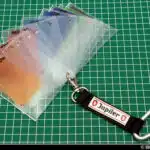As more people become environmentally conscious, reusable bags have become a popular alternative to single-use plastic bags. However, with the increase in usage comes the challenge of properly storing these bags. The importance of proper storage cannot be overstated as it not only prolongs the lifespan of the bags but also ensures that they remain clean and hygienic.
In this article, we will provide you with four clever tips on how to store your reusable bags effectively. Whether you are an avid shopper or someone looking to reduce their carbon footprint, these tips will help you keep your bags organized and ready for use at all times. By implementing these simple yet effective strategies, you can ensure that your reusable bags serve their purpose while remaining in pristine condition for years to come.
The Importance Of Properly Storing Reusable Bags
Importance of Properly Storing Reusable Bags
Reusable bags have become increasingly popular in recent years due to their eco-friendliness and cost-effectiveness. However, it is equally important to consider how they are stored when not in use. Proper storage not only helps maintain the quality of the bags but also ensures their longevity.
One of the most significant benefits of organizing reusable bags is that it saves space. When kept in a cluttered manner, these bags can take up considerable space and may be challenging to locate when needed. By storing them correctly, you can free up valuable storage space while ensuring that the bags are easily accessible.
Another reason why proper organization is crucial is because it reduces wear and tear on the bags. When tossed haphazardly into a drawer or cupboard, reusable bags can get damaged, resulting in holes or tears. However, by storing them neatly and systematically, you can ensure that they remain intact for longer periods.
Rolling up reusable bags is one of the most effective ways to store them properly. It allows you to save space while keeping them organized and easily accessible. In the next section, we will discuss this method in detail and provide some tips on how to do it efficiently.
Tip #1: Roll Them Up
To maximize storage space and keep reusable bags organized, rolling them up is a simple and effective solution. Rolling bags not only makes them easier to store but also has various benefits. Firstly, it minimizes the space they take up, making it easier to fit more bags into a smaller area. Secondly, it helps prevent wrinkles and creases in the fabric of the bag, preserving their quality for longer use. Lastly, rolling bags ensures that they are easily accessible when needed.
To roll up reusable bags, start by laying them flat on a surface such as a table or countertop. Next, fold the bag in half lengthwise before folding it again into thirds. Begin at one end and tightly roll the bag towards the other end until it forms a neat bundle. Secure with an elastic band or tie to ensure that it stays rolled up.
While rolling reusable bags is an efficient way to store them, some may prefer alternative methods. For instance, folding bags into compact squares can be another way to save space while keeping them organized. Additionally, hanging reusable bags on hooks or hangers can be a practical solution for those who have limited shelf or drawer space.
Moving on to our next tip for storing reusable bags – using a bag organizer – this method offers additional benefits for keeping your collection of reusable bags tidy and within reach.
Tip #2: Use A Bag Organizer
Transition from previous section: Rolling up your reusable bags is a great way to save space in your home, but it can be difficult to keep track of them. If you’re looking for an alternative solution, consider using a bag organizer.
Bag organizers are a fantastic way to store your reusable bags. They keep them all in one place and make it easy to find the bag you need when you need it. Plus, they come in a variety of sizes and styles, so you’re sure to find one that fits your needs.
One of the biggest benefits of using a bag organizer is that it helps you stay organized. No more digging through piles of bags trying to find the one you need. Instead, everything is neatly stored in one place. Plus, bag organizers are often made from durable materials like canvas or nylon, which means they can withstand heavy use over time. If you’re looking for an easy and efficient way to store your reusable bags, then a bag organizer is definitely worth considering.
Alternatives to bag organizers include using hooks or hangers to hang your bags on the wall or inside a closet. You can also use baskets or bins to store your bags on shelves or in cabinets. However, these methods may not be as efficient as using a bag organizer since they don’t offer the same level of organization and accessibility. Ultimately, the best storage method will depend on your personal preferences and available space.
Transition into subsequent section: While a bag organizer is great for keeping all your reusable bags together in one place, sometimes you just don’t have enough shelf or closet space for another bulky storage item. That’s where Tip #3 comes in: hang them up!
Tip #3: Hang Them Up
One of the best ways to store reusable bags is by hanging them up. Not only does this help you save space, but it also allows for easy access anytime you need a bag. There are different ways to hang your bags, and one of these is through a DIY bag hanger.
A DIY bag hanger is a simple yet effective way to keep your bags in an organized manner. You can create one using materials such as PVC pipes, wood, or even old clothes hangers. This option provides you with endless possibilities to customize your hanger according to your preference and available resources.
Another option for hanging reusable bags is by using decorative wall hooks. These hooks provide both functional organization and aesthetic appeal to any room in your home. You can choose from various designs and colors that match your decor style while keeping your bags easily accessible.
With the use of a DIY bag hanger or decorative wall hooks, you can maximize the vertical space in your home while keeping your reusable bags organized and accessible at all times. These options are perfect for those who have limited storage space or prefer clutter-free countertops. The next tip will discuss another space-saving storage option for reusable bags – storing them in a drawer.
Tip #4: Store Them In A Drawer
Transition: Now that we’ve discussed hanging up reusable bags, let’s move on to another storage solution – storing them in a drawer. Did you know that over 1 trillion plastic bags are used worldwide every year? And only 1% of these are recycled. By choosing to use reusable bags and properly storing them, we can make a significant impact on reducing plastic waste.
Drawer organization is an effective way to store reusable bags. Not only does it keep them neat and tidy, but it also makes them easily accessible when needed. To organize your drawer, consider using dividers or small bins to separate different types of bags. You can also label each section for even easier access.
If you don’t have space for a drawer or simply prefer alternate storage solutions, there are plenty of options available. For example, you can hang a bag organizer on the back of a door or use collapsible baskets to store your bags in a closet or pantry. The key is to find a system that works for you and your space.
Table:
| Pros | Cons |
|---|---|
| Keeps bags organized | Requires drawer space |
| Easy accessibility | Bags may not stay neatly folded |
| Can be labeled for even easier access | May not accommodate larger bags |
Transition: Properly storing reusable bags not only helps reduce plastic waste but also extends the life of the bag itself. However, it’s important to remember that regular cleaning is necessary to maintain hygiene and prevent the spread of bacteria. In the next section, we’ll discuss how to clean your reusable bags effectively.
Cleaning Your Reusable Bags
Keeping your reusable bags clean and germ-free is essential to ensure that they remain safe for use. Not only do these bags help reduce plastic waste, but they also help keep our environment clean. Cleaning your reusable bags should be a regular habit, just like washing your clothes or dishes. Here are some cleaning methods and disinfecting options to ensure that your reusable bags remain in top condition.
One of the easiest ways to clean your reusable bags is by using a washing machine. Depending on the material of your bag, you can either wash it in warm or cold water. Always check the care label before washing to avoid any damage to the fabric or print on the bag. If you’re worried about colors bleeding, you can opt to wash them separately or use a color catcher sheet. After washing, hang them up to air dry instead of putting them in the dryer.
If you don’t have access to a washing machine, handwashing is another option. Use mild detergent and warm water when handwashing your bags and scrub any stains with a brush gently. Rinse thoroughly with clean water and hang them up to dry. Disinfecting options include using vinegar as a natural antibacterial agent or wiping them down with disinfectant wipes. It’s important not to overload your bag with heavy items that might cause it to tear during cleaning.
As important as reusable bags are for our environment, keeping them clean should always be prioritized for safety purposes. With these cleaning methods and disinfecting options, maintaining their cleanliness has never been easier. In the next section, we’ll discuss tip #1: checking the care label before cleaning your reusable bags for optimal care and longevity of their use.
Tip #1: Check The Care Label
The truth is, not all reusable bags are created equal. While some may be made of durable materials that can withstand multiple uses, others may require more careful handling to maintain their integrity. This is why it’s crucial to check the care label on your reusable bags before storing them away.
Care labels provide information on how to properly care for a particular item, including washing instructions and other special considerations. By checking the care label on your reusable bag, you can ensure that you’re taking the necessary steps to keep it in good condition. Some bags may be machine-washable, while others may need to be hand-washed or spot-cleaned only.
Ignoring the care label could lead to premature wear and tear on your bags, which defeats the purpose of using them in the first place. Taking a few extra minutes to check the care label and follow the recommended washing instructions can go a long way towards extending the life of your reusable bags. In the next section, we’ll discuss another tip for keeping your reusable bags clean and ready for use: washing them regularly.
Tip #2: Wash Them Regularly
It is vital to check the care label of your reusable bags before storing them. Some bags may require special care, such as handwashing or avoiding high heat in the dryer. It is essential to follow these instructions to ensure the longevity of your bags and prevent any damage.
Another crucial aspect of maintaining your reusable bags is washing them regularly. The frequency of washing depends on how frequently you use them and what you carry in them. For example, if you use your bag for carrying groceries, it should be washed more often than a bag used for carrying clothes. Washing your reusable bags helps eliminate bacteria and odors that can accumulate over time.
To wash your reusable bags effectively, turn them inside out and wash them with similar colors in cold water. Avoid using fabric softeners or bleach as they can damage the fibers of the bag. It is also best to air dry them rather than using a dryer as this can cause shrinkage or damage to the bag’s material.
- To make washing easier, consider having a designated spot for dirty reusable bags.
- Use a laundry mesh bag for extra protection during washing.
- Place small items like produce or loose change in a separate pouch within the bag to avoid damage during washing.
- Consider purchasing multiple sets of reusable bags so that you always have clean ones available.
Moving forward with proper care habits will help ensure that your reusable bags remain in top condition. Maintaining regular cleaning routines, appropriate washing techniques, and adequate storage will guarantee their longevity. Next up on our list is tip #3: air dry them – an important step in ensuring they last longer!
Tip #3: Air Dry Them
Symbolism can be found in the simple act of air drying reusable bags. It’s an invitation to slow down, to let go of the rush of our daily lives and embrace a simpler, more sustainable way of living. As we hang our bags up to dry, we’re reminded that every small action we take towards reducing waste contributes to a larger movement towards a healthier planet.
When it comes to drying methods for reusable bags, there are a few things to keep in mind to avoid damage. First and foremost, never put your bags in the dryer! This can cause shrinkage or even melt any plastic components of the bag. Instead, opt for hanging them up on a clothesline or using a drying rack. If you must use a hanger, make sure it has rounded edges and won’t create creases or damage the fabric.
To help you choose the best drying method for your reusable bags, here’s a table outlining the pros and cons of each option:
| Drying Method | Pros | Cons |
|---|---|---|
| Clothesline | Uses no energy, sun can help sanitize bags | Weather-dependent |
| Drying Rack | Easy and convenient, great for small spaces | Takes up floor space |
| Hanger | Free if you already have one available | Can cause creases or damage |
By choosing the right drying method for your reusable bags, you can ensure they last as long as possible and continue helping reduce waste in your community. Next up: Tip #4 – Use A Laundry Bag.
Tip #4: Use A Laundry Bag
After air drying your reusable bags, the next step is to organize them in a laundry bag. This is a great way to keep your reusable bags together and prevent them from getting lost or misplaced. A laundry bag can also be useful for storing other items such as produce bags, tote bags, and mesh bags.
When it comes to laundry bag storage for your reusable bags, there are a few tips to keep in mind. First, make sure that you choose a laundry bag that is made of durable material such as nylon or mesh. These materials allow your reusable bags to breathe and prevent any unwanted odors from developing. Second, consider using multiple laundry bags if you have a large collection of reusable bags. This will help you easily identify which bag contains which type of reusable bag.
Finally, it’s important to properly label your laundry bags for easy identification. You can use markers or labels to indicate what type of reusable bag is stored in each bag. This will help you quickly locate the specific type of bag you need when heading out for grocery shopping or other errands.
In summary, using a laundry bag for reusable bag organization is a simple yet effective way to keep track of your collection of eco-friendly bags. With these tips in mind, you can ensure that your reusable bags stay clean, dry, and organized for years to come. Next up, we’ll explore how to store different types of reusable bags for maximum efficiency and convenience.
Storing Different Types Of Reusable Bags
Shopping bags can be stored by using a hook or hanger on the side of a pantry door or in a closet. Produce bags are best stored in a wall-mounted basket or drawer, or even in a hanging shoe organizer. Lunch bags can be kept together in a kitchen drawer, or hung up in a closet to save space. Finally, cooler bags can be stored in the garage or basement, or even at the back of a cupboard.
Shopping Bags
Reusable bags like shopping bags are eco-friendly alternatives to plastic bags, reducing plastic waste in the environment. However, it can be challenging to store them efficiently without taking up too much space in your home. Here are four clever tips on how to store shopping bags.
Firstly, you can use a designated bag dispenser that hangs on the wall or inside a cabinet door. This option allows you to store multiple bags while keeping them easily accessible when you need them. Secondly, you can fold up your shopping bags and keep them organized in a small zippered pouch or mesh bag. This method is ideal for those who prefer compact storage solutions.
Thirdly, you can use a hanging organizer with multiple pockets that allow you to separate different types of reusable bags. This alternative is perfect for those who have various sizes and styles of reusable shopping bags. Lastly, consider repurposing old tissue boxes or cardboard tubes from wrapping paper as storage containers for your shopping bags. This option allows you to stack the boxes or tubes vertically and save space while keeping your reusable bags organized.
In conclusion, using eco-friendly alternatives like reusable shopping bags is an excellent way to reduce plastic waste. With these four clever tips on how to store your shopping bags efficiently, you can keep them organized and easily accessible whenever necessary.
Produce Bags
When it comes to reducing plastic waste, using reusable bags is a great step forward. However, it’s not just shopping bags that can make a difference. Another type of bag that can have an impact is the produce bag. Produce bags are used to hold fruits and vegetables at grocery stores, but they are often made of plastic and add to the problem of plastic pollution. Thankfully, there are reusable options available for produce bags as well.
Using produce bags made from eco-friendly materials such as cotton or mesh can significantly reduce plastic waste. These reusable bags not only cut down on the amount of single-use plastic, but they also keep fruits and vegetables fresher for longer periods. However, like shopping bags, storing these produce bags can be a challenge without taking up too much space in your home.
One effective way to store produce bags is by using a designated pouch or container specifically designed for them. You can easily fold them up and keep them organized in a small zippered pouch or even use a hanging organizer with multiple pockets that allow you to separate different types of reusable bags. By following these simple tips, you can help reduce plastic waste while keeping your reusable produce bags organized and accessible whenever necessary.
Tip #1: Folding Cloth Bags
Folding Cloth Bags: Space Saving Ideas
When it comes to storing reusable bags, one of the most important things to consider is how much space they take up. This is especially true for cloth bags, which can be quite bulky when not folded properly. Fortunately, there are some folding techniques that can help you make the most of your storage space.
To start with, it’s important to choose a folding technique that works best for the type of bag you have. For example, some bags may be easier to fold in thirds, while others may work better with a more complicated folding pattern. Once you’ve found a technique that works well for your bag, practice it until you can do it quickly and efficiently.
One way to make the most of your storage space is to use a folding board or template. This is essentially just a piece of cardboard or plastic cut to the exact size and shape of your bag. By using this template every time you fold your bag, you’ll ensure that it always takes up the minimum amount of space possible.
| Pros | Cons |
|---|---|
| Saves Storage Space | May Require Extra Time |
| Keeps Bags Neat and Tidy | Requires Practice |
| Makes Folding Easier | May Not Work for All Bag Types |
By taking advantage of these space saving ideas for folding cloth bags, you’ll be able to store more bags in less space without sacrificing organization or accessibility. Plus, once you get the hang of these techniques, folding your bags will become second nature – making it even easier to keep them neatly stored away until their next use.
Transition: Now that we’ve covered ways to maximize storage space for cloth bags let’s move on to another useful tip – keeping insulated bags in the freezer.
Tip #2: Keeping Insulated Bags In The Freezer
After folding your cloth bags, the next step is to organize your freezer space for your insulated bags. It’s important to keep these bags in the freezer because it helps to maintain their insulation abilities. When they’re stored at room temperature, it can cause the insulation to break down over time, which reduces its effectiveness. By storing them in the freezer, you’ll not only keep them in good condition but also create more space in your pantry.
Freezer organization is key when it comes to maintaining insulated bags. Before dedicating an entire shelf or drawer to these bags, it’s important to go through and see what else you have in there. Clean out any expired items or things you no longer need so that you can free up some space. You can then use this newly-created space for your insulated bags, ensuring they stay organized and easy to find.
When storing insulated bags, make sure to remove any food crumbs or debris first as this will prevent bacteria growth and odors from developing. Once cleaned, fold the bag neatly and place it in a designated spot in the freezer. If you have several insulated bags of different sizes, consider nesting them together like Russian dolls so that they take up less space.
As we’ve seen, keeping reusable bags organized is an essential part of living a sustainable lifestyle. By following these simple tips for maintaining insulated bags and organizing your freezer space effectively, you’ll be able to make the most of your storage area while also reducing waste and supporting the environment. In the next section, we will discuss another useful tip for storing mesh bags.
Tip #3: Storing Mesh Bags
Did you know that approximately one trillion single-use plastic bags are used worldwide each year? That’s a staggering amount of waste that ends up in landfills or polluting our oceans. By using reusable bags, we can significantly reduce this number and make a positive impact on the environment.
When it comes to storing mesh bags, there are several hanging options available. One popular option is to use a hook or suction cup to hang the bag on the inside of a pantry door or closet door. Another option is to use a hanger with clips to hang the bag in your closet. Hanging your mesh bags not only keeps them organized but also allows for air circulation, preventing any musty odors from developing.
If you’re looking for an alternative to mesh bags, there are other storage options available as well. Some people prefer using tote bags with compartments specifically designed for organizing groceries. Others opt for collapsible storage boxes that can be easily stored away when not in use. Whatever method you choose, it’s essential to find something that works for you and helps keep your reusable bags organized and easily accessible.
In conclusion, taking care of your reusable bags is crucial for protecting our planet and reducing waste. By utilizing hanging options or exploring mesh bag alternatives, you can ensure that your reusable bags stay organized and in good condition for many uses to come. So take the time to invest in proper storage solutions today – it’s a small step towards creating a better tomorrow!
Conclusion: Take Care Of Your Reusable Bags For A Better Planet
Transitioning from the previous section, storing reusable bags properly is just one of the many eco-friendly habits that we can adopt to promote sustainable living. It is essential to remember that every small action counts when it comes to taking care of our planet. By being mindful of our consumption habits and making conscious choices in our daily routine, we can make a significant impact on reducing waste and preserving natural resources.
To further promote sustainable living beyond storing reusable bags, here are some additional tips to consider:
- Use cloth napkins instead of paper ones. Not only do they add a touch of elegance to your dining table, but they also save trees and reduce waste.
- Invest in a reusable water bottle or travel mug instead of buying single-use plastic bottles or cups. This simple change can significantly reduce the amount of plastic waste produced.
- Shop locally and seasonally for produce whenever possible. This not only supports local farmers but also reduces the carbon footprint associated with transporting food over long distances.
Incorporating these eco-friendly habits into our daily lives may take some effort at first, but with time, they become second nature. Remember that every small action counts towards creating a more sustainable future for ourselves and future generations. By taking care of our planet today, we ensure a better tomorrow for all.
Conclusion
Properly storing reusable bags is crucial not only to keep them in good condition but also for the environment. In this article, we have provided four clever tips to help you store your reusable bags effectively. Rolling them up, using a bag organizer, hanging them up and storing them in a drawer are all great ways to keep your bags organized and easy to access.
When it comes to specific types of reusable bags, folding cloth bags, keeping insulated bags in the freezer and storing mesh bags require unique approaches. By taking care of your reusable bags, you are playing a small but significant role in protecting our planet.
In conclusion, storing your reusable bags correctly is essential for maintaining their longevity and ensuring that they continue to benefit the environment. Whether you choose to roll them up or hang them up, make sure that they are easily accessible when needed. Remember that every small step we take towards sustainability can have a significant impact on our planet’s health. So let’s take care of our reusable bags for a better future!
Image Credits
- “foldablebags.com animal reusable bags” by foldablebags.com (featured)





























